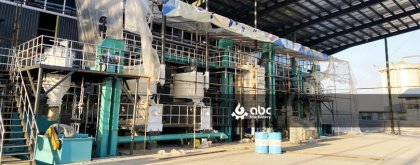Setting up a soybean oil refinery plant is an ambitious but rewarding venture now. With the increasing demand for high-quality soybean oil, understanding the intricacies of the refining process and the necessary refining machines can significantly boost efficiency and profitability. This blog will walk you through the essential soybean oil refinery process steps, machines, and considerations for starting your own soybean oil refinery business.
(Something you should know if you want to start a soybean oil refining plant>>)
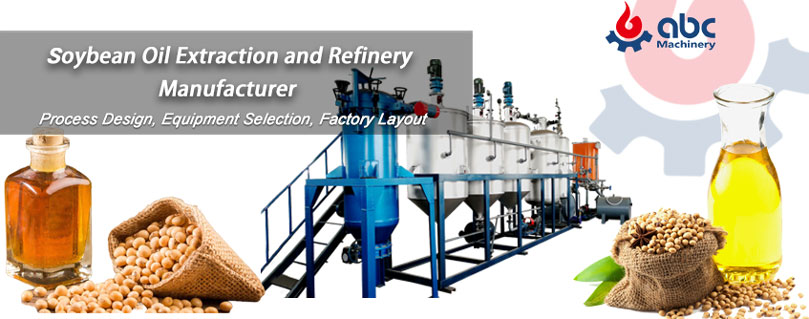
Start Profitable Soybean Oil Refinery Business With ABC's Support
Soybean Oil Refinery Process Optimization for High Oil Yield
Crude soybean oil is extracted through the mechanical pressing or solvent extraction method, which contains colloidal impurities, free fatty acids (FFA), pigments and odor substances and other impurities, affecting the storage and consumption of refined soybean oil. It is necessary to carry out further refining, in order to obtain the market value of soybean oil. (Read More: Understanding the small soybean oil extractor machine>>)
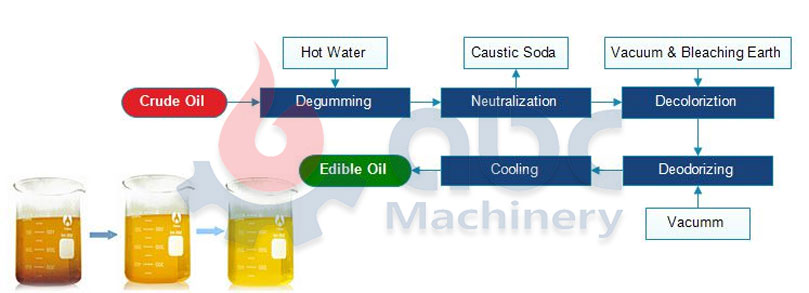
General Edible Oil Refinery Process Flow Chart
Usually, the steps of edible oil refining process technology mainly include four steps: degumming, deacidification, decolorization and deodorization process. Crude soybean oil has low acid value and high phospholipid content, so degumming process-phospholipid removal is crucial in the soybean oil refinery process.
Optimized Process Parameter Highlights
- In the process of degumming and deacidification, primary phosphoric acid addition amount of 0.03% ~ 0.05%, liquid alkali addition amount of 0.5% ~ 0.7%, the second phosphoric acid addition amount of 0.01% ~ 0.02% is more appropriate.
- In the process of decolorization, when the mixing ratio of bumpy bar clay and active white clay is 2:1, the oil content of waste white clay is 20%, which is more reasonable.
- The degumming process removes the colloidal impurities in the crude soybean oil, mainly phospholipids. Soybean oil and a certain proportion of phosphoric acid solution (or water) fully mixed, the reaction separation to remove phospholipids.
- The deacidification/alkalization process removes free fatty acids from soybean crude oil. Mix the soybean oil after degumming process with a certain proportion of lye to remove free fatty acid and phosphoric acid left in the previous process.
- Decolorization/bleaching process removes pigments and oxides that affect the color of soybean crude oil. The alkaline refinery oil and adsorbent white clay are mixed and reacted and then removed by a filter machine.
- The deodorization process removes the odor volatiles from soybean oil. Under the condition of reduced pressure and temperature, the decolorized soybean oil enters the deodorization equipment for deodorization reaction. After deodorization, the hot oil is cooled and fine filtered to get rbd soybean oil.
Good soya bean oil refining process through the precise control of each step of the process parameters, can improve the soybean oil refining yield (96.5%), reduce the refining process loss, and effectively reduce the waste water, waste oil, waste soil and other pollution of the environment, and further reduce the production cost.
[Factory-Direct] Affordable Soybean Oil Refining Machines (for Various cooking oils)
According to the process of soybean oil refinery, soybean oil refining equipment mainly has soybean oil batch refinery machine, soybean oil semi-continuous refining machine and soybean oil full continuous refinery equipment.

ABC's Large Soybean Oil Continuous Refinery Plant Project
The refining process of soybean oil batch refining line is carried out batch by batch. Soybean oil batch oil refinery machines is suitable for 1-30 tons/day small soybean oil refinery plant.
The Pros of Mini Soybean Oil Refinery Plan: Compact Brilliance
The equipment composition of mini/small soybean oil refining line is shown in the below figure, which mainly includes two refining tanks, decolorization tank, deodorization tank, steam generator, vane filter, heat conduction oil furnace and so on. The structure of hydration tank and neutralization tank is the same, both are called refining tank.
- Cost Effective: Compared to large continuous soybean oil refinery plants, mini soybean oil refining line have significantly lower acquisition costs. They typically consume less energy and have lower maintenance costs, helping companies to increase profits while reducing costs.
- Flexibility: Mini batch soya oil refiners are able to process different batches of soybean oil, making them suitable for situations where market demand fluctuates. As your business grows, you can gradually expand your production capacity by adding more equipment or upgrading your existing equipment without making a large one-time investment.
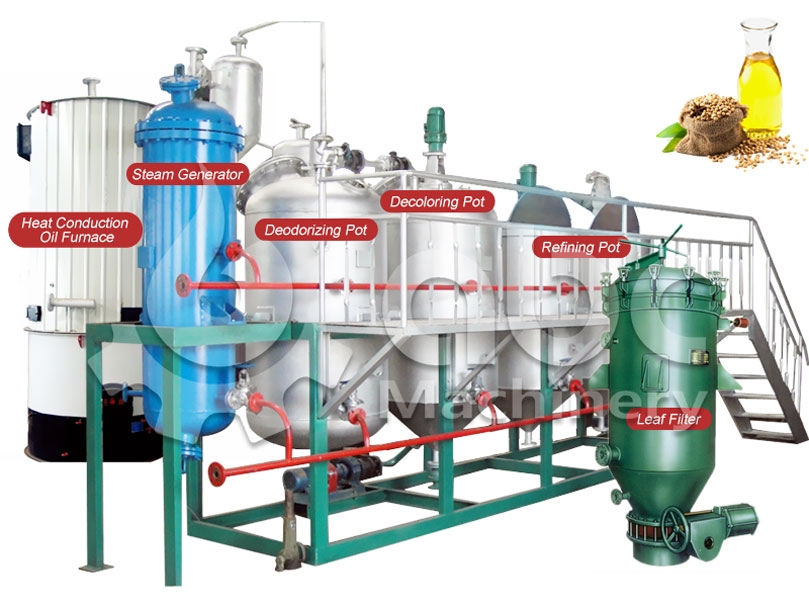
Equipment Composition of Mini/Small Soybean Oil Refinery Line
- Simple to operate: small soybean oil refining machines are usually designed to be simple and easy to operate, and do not require highly specialized technical staff to run.
- Small Footprint: Mini soybean oil refinery plant are compact and have a small footprint, making them ideal for production environments with limited space. At the same time, the flexible soybean oil refinery equipment layout allows for more flexible plant planning for future expansion and adjustment.
With their many advantages, mini soybean oil refinery machines are ideal for small and medium-sized soybean oil mill plant and emerging markets. Whether you're just getting started in the edible oil processing industry or looking to optimize your equipment to improve the efficiency and profitability of your existing soybean oil manufacturing business, these machines provide strong support and assurance.
Contact us today to learn more about our mini and compact soybean oil refining equipment, and let us help you choose the best solution to help your business get off the ground.
Expert tips for buying soybean oil refinery machines
► First, thoroughly evaluate your production requirements, including the size of your operation and your specific needs. Understanding your needs will guide you in choosing the right soybean oil machine for your production goals.
► Second, prioritize innovation. Look for equipment that integrates advanced technology, such as precise control of refining parameters like temperature and vacuum.
► Next, choose a soybean oil refinery machine manufacturer/supplier with a good reputation in the vegetable oil processing industry. Reputable brands are more likely to offer reliable and durable equipment as well as better customer support. If possible, consider visiting the supplier's factory workshop. Seeing the machine in action can provide valuable information about its performance and the supplier's capabilities.
► Ensure that the supplier provides comprehensive pre- and post-sales support, including assistance with machine selection, installation and ongoing maintenance.
► Check packaging and documentation on delivery to ensure everything is in order. Thoroughly check all technical documentation and manuals supplied with the machine. Check the condition and appearance of the machine for any defects or problems. If necessary, request an on-site test from the manufacturer to verify the performance of the machine.

ABC Machinery has a reputation for advanced technology and reliability in the cooking oil processing industry. We offer a one-stop service from needs assessment, equipment selection, installation to maintenance to ensure your production runs smoothly. Come visit our machinery manufacturing factory and see for yourself the outstanding performance of our equipment. Contact us to learn more!
We receive enquiries in English, Español (Spanish), Русский язык (Russian), Français (French) and العربية (Arabic).Our professional team will reply to you within one business day.Please feel free to contact us!



 Screw Oil Press
Screw Oil Press Small Oil Mill Plant
Small Oil Mill Plant Small Oil Refinery
Small Oil Refinery Automatic Oil Press
Automatic Oil Press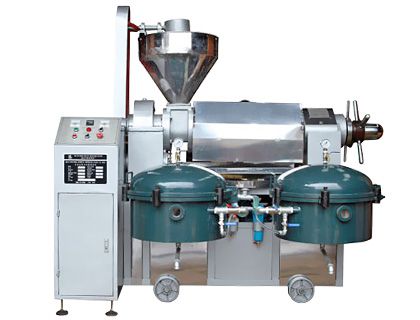 Multifunction Oil Press
Multifunction Oil Press Hydraulic Oil Press
Hydraulic Oil Press


![[Presidential Visit] Zimbabwe 30 Tons/Day soybean oil plant for Extraction and Refinery Was Successfully Completed](/uploads/allimg/soybean-oil-plant-press-refine-business-lp.jpg)

